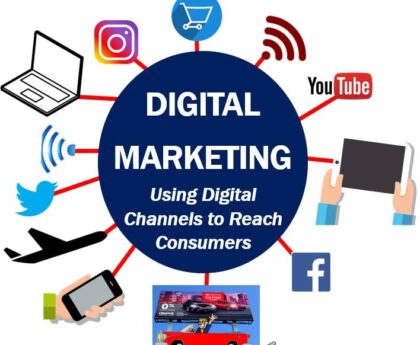Today, it’s difficult to envision managing a field service business without digital tools, whether that unit aids other sections of your organization or offers field support to clients outside of your firm.
However, certain software applications with limited functionality could make it more challenging to manage and supervise field service crews. Field service would be more effective and productive with software at the top of its game.
Unveiling the Ideal FSM Tool: Essential Features for Success
Using field service software to automate and enhance crucial business processes like scheduling, dispatching, collaboration, route optimization, and work order and case management is now much simpler for organizations thanks to cloud and mobile technologies.
You may improve and streamline your operations with the help of these solutions to increase your profitability.
The fundamental and sophisticated elements of field service management system software are examined below:
Some of the fundamental characteristics are as follows:
- Scheduling, sending out, and task routing
- Work Order Management
- Accessibility on Mobile
- Inventory Management for Parts
- Case, contact, and order management
- Communication
Your business may have managed to get by with manual documentation and processes and calling each other when a task needed to be completed immediately. Customers of today, however, are fastidious and technologically savvy, and they want speedy turnaround times and error-free work.
Elevating Service Excellence: The Significant Benefits of Field Service Management
Speed of Productivity:
You are aware that every second matters as a stakeholder in the field service industry. For instance, if your technicians spend less time looking for the optimal routes, they will have more billable hours available to do more assignments. As a result, efficiency is increased since you can respond to customer requests more rapidly.
Reduced Operating Costs:
You may save money by using field service management software to manage work orders, reduce the quantity of paper-based documentation, and optimize routes, among other things.
A workforce management tool also helps to cut down on the expense of travel. You’ll spend less on gasoline and fleet maintenance thanks to clear routes and fewer visits back to the main office, which will result in cost savings.
Since it will be easy for technicians to communicate with clients regularly while they are still on-site regarding issues like satisfaction, payment, and appointments. Additionally, it will drastically lower outreach and sales expenses.
Operation of Remote Systems:
Like any other management tool, the FSM application may be utilized remotely. It is available everywhere in real-time for usage by employees, independent contractors, business partners, and administrators.
Enhances Relationships & Assists in Connection Building:
Any field service firm involves both customers and staff in the same endeavor. Despite functioning separately, they both contribute to the same corporate goal—raising the bottom line.
The FSM software acts as the binding agent in our case. Client satisfaction on every level is ensured through quick turnaround times. As you are aware, satisfied clients are necessary for a content team and long-term project success.
Enables a more thorough comprehension of the business:
It’s possible that you are not yet aware of all that is occurring throughout the service delivery process. Knowing where the gaps are allows you to take swift action to address the issues and enhance customer service.
GPS tracking is maximized:
With the use of cutting-edge GPS signals, several FSM technologies can monitor the whereabouts of your technicians. When a technician visits or quits a task site, this system can send a notification to the headquarters. If you have a technician heading to a client who isn’t where they should be or is just lost, this is incredibly useful.
The Major Areas Transformed by an FSM Solution
Service Contracts:
An SLA is a contract that guarantees performance and details what will happen if the criteria aren’t satisfied.
Typically, an SLA encompasses services, software, and hardware. Unauthorized modifications, incorrect usage, skipping mandatory maintenance, failures brought on by unsupported add-ons, financial contract breaches, etc. are among the things that aren’t covered.
By examining client service level agreements (SLAs), comprehending what they cover, and preparing and executing exceptional service for the proper consumer, a field service management system assists organizations in avoiding fines.
Customer and Client Assets:
You can keep track of the equipment you are responsible for inspecting, maintaining, and repairing with the aid of client assets. The only client assets are a list of the goods at each client location.
They may, however, also maintain a record of all completed and pending work orders for each asset’s service history. By adding sensors to client assets, you may monitor their state, issue IoT alerts, and request services as necessary when using Connected Field Service.
Proactive and preventive maintenance:
Since keeping equipment in excellent condition for as long as possible, tracking all maintenance-related data is essential. This will reduce the possibility of unanticipated issues and failures, which might cause scheduling and site visits to be delayed.


